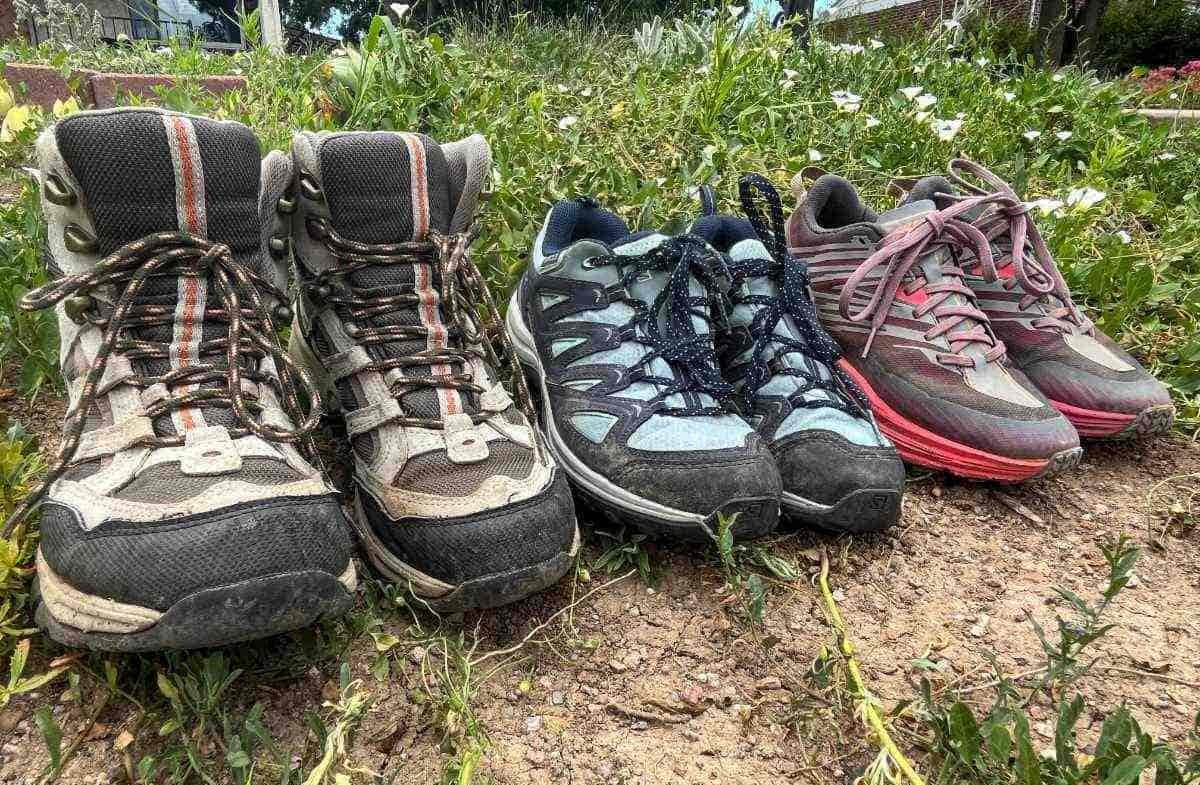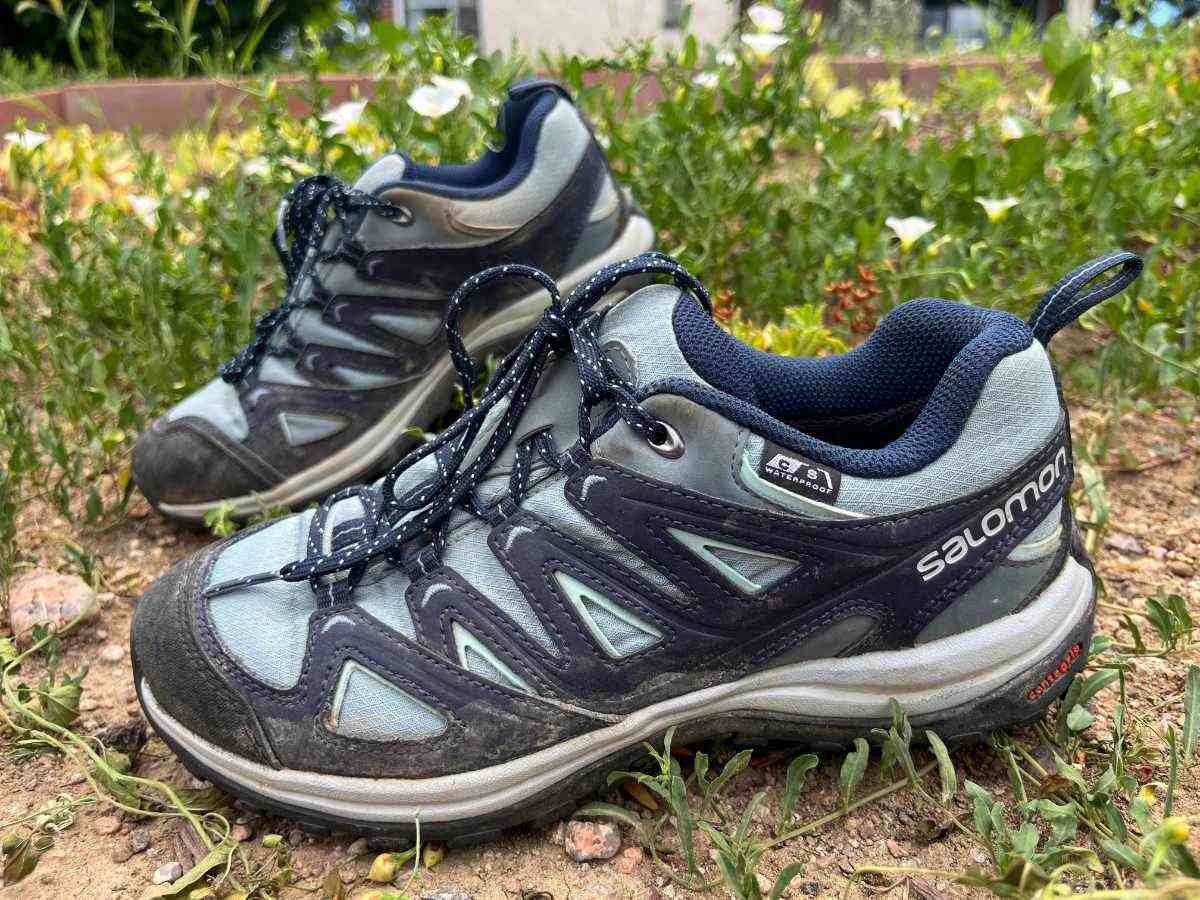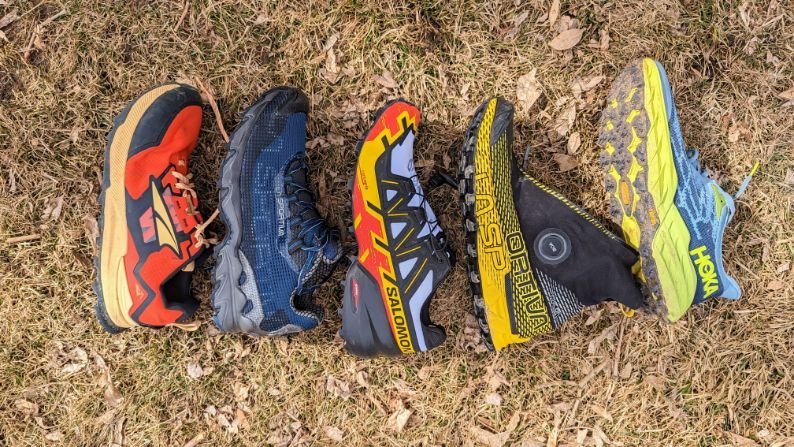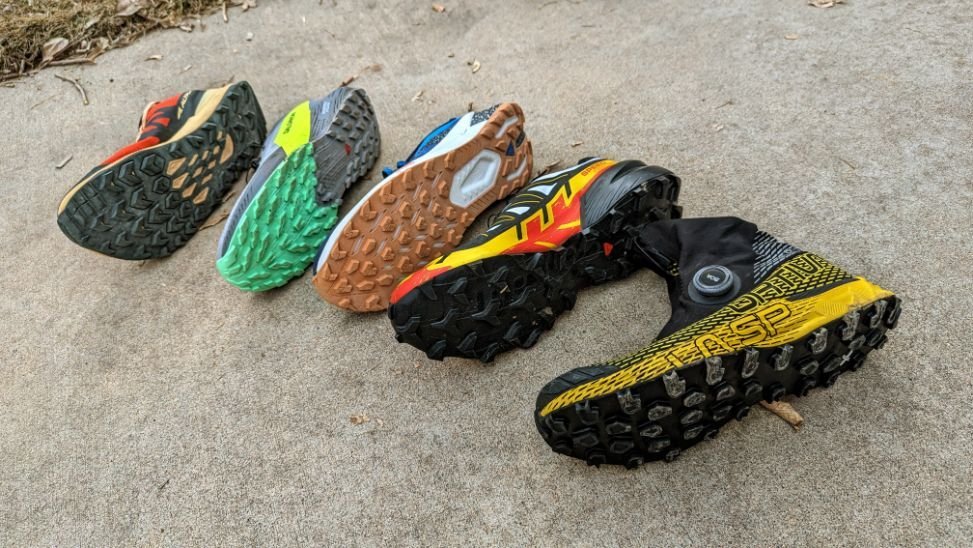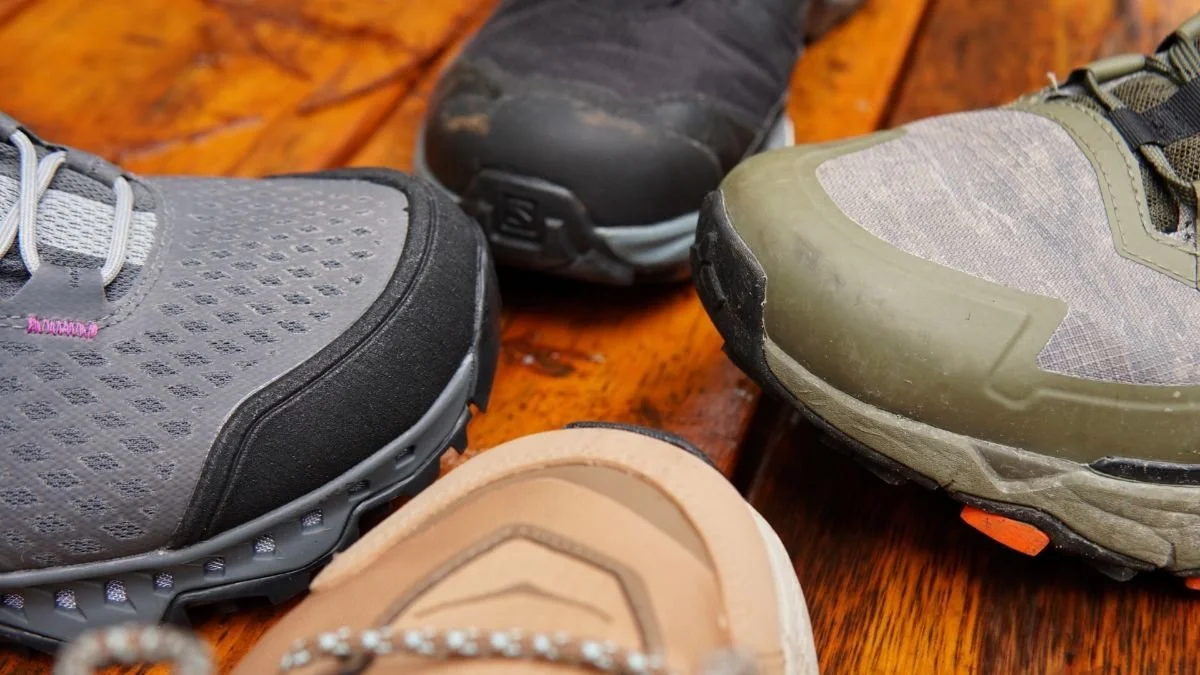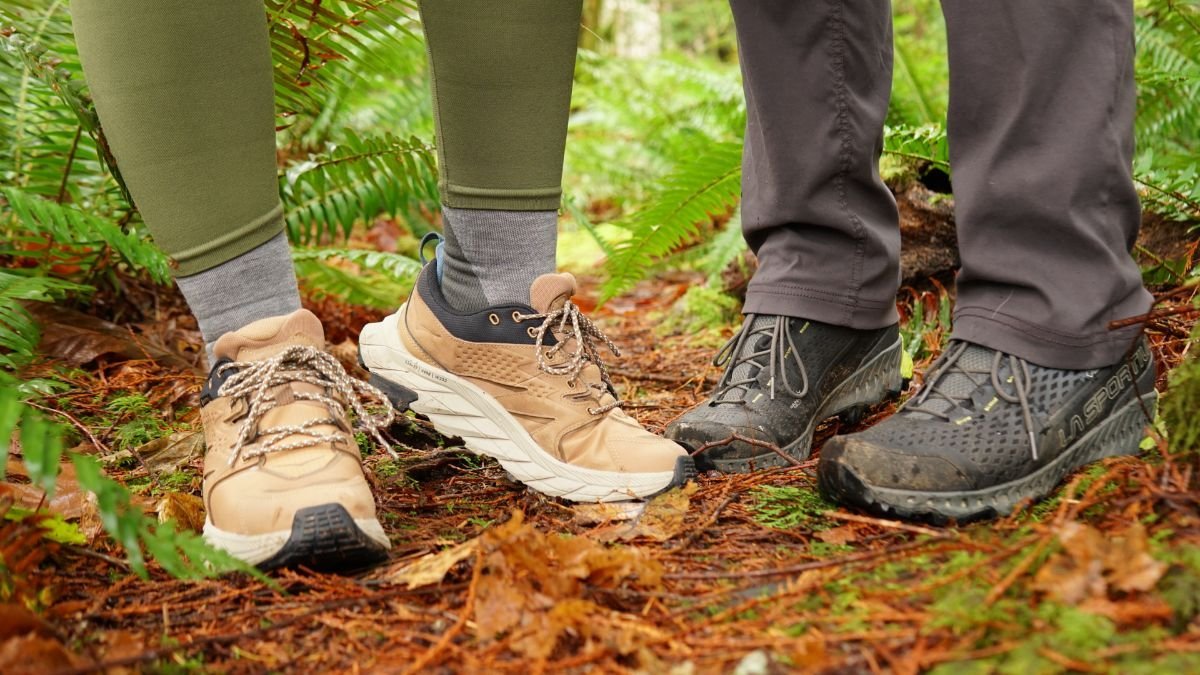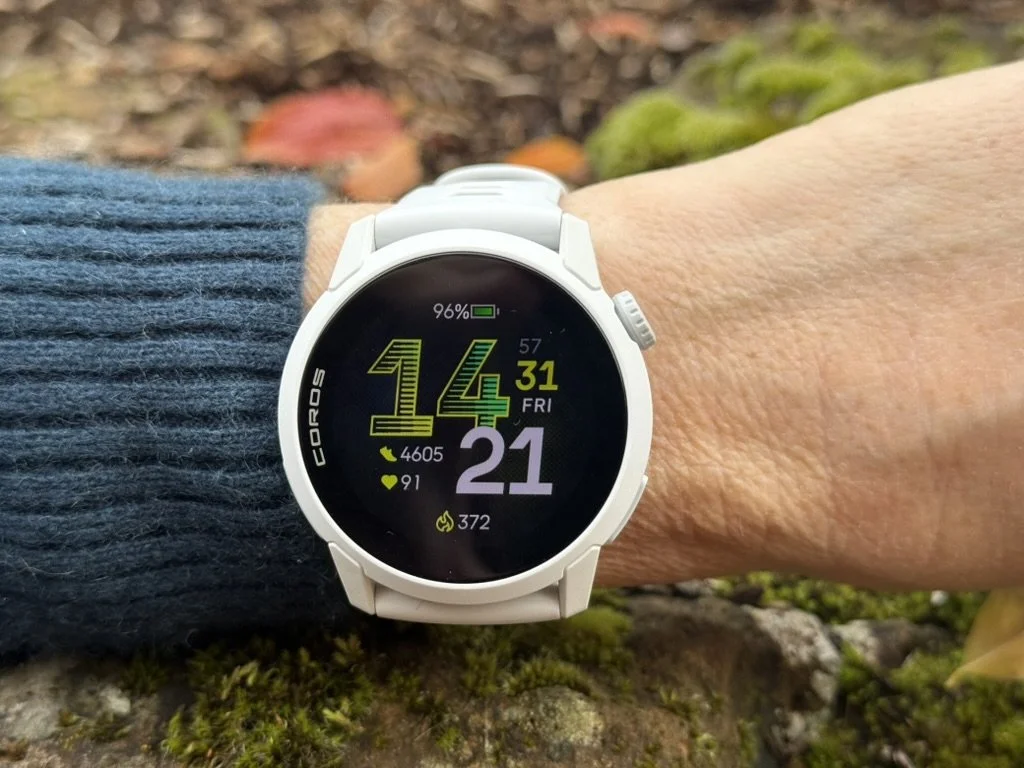Trail Running Shoes vs Hiking Shoes
We dive into the details of the great hiking footwear debate
Last Updated April 3, 2024
Home > How to Choose Gear
Hiking and trail running involves spending a lot of time on your feet (or, at least, spending a lot of time in the same pair of shoes) which makes hiking footwear an important consideration before stepping outdoors. (Happy feet make for a happy hike!) The comfort of the cushion and fit of your hiking footwear is important. You don't need to be a trail runner to enjoy the benefits of a trail running shoe. Depending on where and how long you’ll be hiking, factors like tread, breathability, or waterproofness matter as well. In this guide, we’ll discuss the qualities of trail running shoes and hiking shoes to help you determine the best hiking footwear for your outdoor needs.
See our best trail running shoes for men and best trail running shoes for women and best hiking shoes guides.
We create reader-supported, objective gear reviews independently selected by our editors. This story may contain affiliate links, which help fund our website. When you click on the links to purchase gear, we may get a commission — without costing you an extra cent. Thank you for supporting our work and mission of outdoor coverage for every body! Learn more.
Our verdict
Close up of the La Sportiva Jackal II on rocky terrain. Photo by Sam Schild.
Trail runners are best if:
You want a lighter load for quicker movement
You want to prioritize comfort
You want a lightweight hiking shoe to prevent fatigue
Breathability is a priority
You want versatility for multiple uses
You're hiking in hot conditions
You are a trail runner in addition to a hiker
You want to minimize break-in time
Hiking shoes are made of sturdier materials and made for lasting on rugged trails. Photo by Becca Downs.
Hiking shoes are best if:
You require more stability
You want a heavier load for steadier movements
You want more ankle protection and toe protection
You need more traction and a burlier sole
You’re looking for a warmer shoe for cold weather
You want a waterproof shoe
Durability is a priority
Of course, choosing between hiking shoes and trail running shoes has a lot to do with personal preferences and priorities. The terrain and weather conditions of your trek, how far you’ll be going, how much weight you’ll be carrying, and your personal comfort choices will all determine which option is better for you.
Ultimately, it may not be an either/or situation. Rather, you may decide to use different hiking footwear for different situations, trails, speeds, and weather conditions.
Below we break down what to consider when choosing hiking footwear. At the end of the day, however, it’s often best to test them out for yourself. Go to an outfitter to try on a hiking boot or hiking shoe. Then try on trail running shoes. This will help you understand the difference first hand.
Hiking shoes are designed specifically for hiking on technical and tough terrain, whereas trail running shoes are designed for quick movement on runnable trails. It’s important to understand the differences in hiking footwear so you can optimize performance and ensure your health and safety. After all, for most of us our feet carry the brunt of our outdoor activities.
Comparison of the toe cap and other foot protection on several trail running shoes. Photo by Sam Schild.
Trail Running Shoes
Trail running shoes are intended for more rugged or technical surfaces than paved roads. Like road running shoes, a trail shoe is more breathable and lighter in weight than a hiking boot. But a trail shoe will have more protective reinforcements than a road running shoe.
The outsoles have better grip–often with lugs that will prevent slipping on rocks or mud. The uppers offer extra protection around the toes, ankle, heels, and other key areas. Some trail running shoes are waterproof, but most are not. Some have rock plates in the sole to provide extra protection from sharp objects, others do not. There’s a lot of variety in the trail running shoe world, so we’ll break down the anatomy and purposes below. (You can also check out our men’s and women’s Best Trail Running Shoes guides.)
Design
LIGHTWEIGHT CONSTRUCTION
While the uppers on trail running shoes are more reinforced than road running shoes (and thus, heavier), they still are made with lightweight breathable fabrics. Since hiking shoes are typically made with leather or synthetic leather and a waterproof membrane, trail running shoes weigh less and feel less heavy on the feet. A trail running shoe will be a more minimalist shoe.
FLEXIBLE SOLES
If you're a trail runner, you'll especially want flexible soles for quicker movement. But hikers can benefit from this shoe design, too. The flexible outsoles of the trail running shoe encourage quicker turnover than the heavy and sturdy outsoles of a hiking shoe. In other words, since trail running shoes aren’t as stiff as hiking shoes, you can move more quickly.
BREATHABILITY AND QUICK-DRYING MATERIALS
Trail running shoes are made with mesh uppers – not just to keep the shoe lightweight but for breathability as well. Feet will overheat quicker while running, so this is designed to help regulate body temperature. Additionally, as water can easily enter a trail running shoe this way, the materials are also quick-drying and draining to prevent blisters during a trail run.
LUG SOLE
Trail running shoes have lugs of varying sizes on the outsoles for traction. Most trail running shoes won’t offer the thick and grippy lugs that hiking shoes do (though some do, like the Scarpa Spin Ultras or to a less extreme extent, the Salomon Speedcross). As trail running shoes were designed for quicker turnover, the lugs won’t offer the same level of traction at a faster pace as the lugs on hiking shoes at a slower pace will. This is one of the main differences between a trail runner and a regular running shoe.
WATERPROOFING (NOT ALL MODELS)
Some trail running shoes, like the La Sportiva Cyklon Cross GTX or the HOKA Speedgoat GTX, include a waterproof membrane. This means they will be less breathable than traditional trail running shoes but will keep your feet dry in most conditions. On a personal level, I prefer non-waterproof shoe so my feet can breathe and so sweat doesn’t collect in the shoes while I run. However, folks who frequently run in snowy conditions appreciate shoes designed for trail running that can keep their feet warm and dry. See our in-depth HOKA Speedgoat 6 review for more information.
Comparison of trail running shoes with rock plates to protect the soles of feet from feeling sharp rocks. From left to right: Altra Lone Peak, La Sportiva Wildcat, Salomon Speedcross, La Sportiva Cyklon Cross GTX, HOKA Speedgoat.
Advantages of trail running shoes
LIGHTWEIGHT
Trail running shoes are designed with mesh uppers and lighter rubber outsoles to allow for faster and more agile movement than hiking shoes allow for. Trail runners are generally a lighter shoe than hiking shoes. This is great for anyone looking to bop more quickly and have less foot fatigue at the end of the day.
FAST MOVEMENT AND AGILITY ON TRAILS
In addition to the lightweight materials of trail running shoes, the flexible and grippy outsoles help for faster turnover and traction. This allows for more agile and quick movements.
COMFORT DURING LONG-DISTANCE RUNNING AND HIKING
Unlike hiking shoes, trail running shoes are specifically designed for running. They are tailored for that purpose, which means they will be far more comfortable for long-distance running than hiking shoes.
QUICK ADAPTATION TO DIFFERENT SURFACES
As opposed to road running shoes, trail running shoes are designed to handle different surfaces–rocks, gravel, dirt, mud, etc. While hiking shoes are also designed for those surfaces, trail running shoes are lighter and more flexible, allowing for greater agility and quick adaptation to various surfaces. The HOKA Challenger, for example, is a favorite shoe among trail runners for its cushion, comfort, and ability to cover a variety of hiking trail types and weather conditions. This is why it won our Best Men’s Best Crossover Trail Running Shoe (as well as the Best Women’s Trail Running Shoe for Wide Feet).
SHORT BREAK IN PERIOD
Due to the cushioned soles and lightweight construction of trail running shoes, they do not take as long to break in as hiking shoes. This means taking on longer adventures sooner without foot pain.
BREATHABILITY
The mesh uppers encourage airflow and help prevent overheating. You’re less likely to blister as well since less moisture will be hanging around.
VERSATILITY
Trail running shoes are great for running on trails, yes, but they’re also great for hiking in most conditions. If you’re a hiker who is willing to sacrifice some foot protection and stability, trail running shoes are a comfortable hiking option. In my personal experience, I’ve found trail running shoes to be a good option for hiking on days when the trail conditions aren’t super muddy or snowy, and when I want to hike long without worrying about tired feet.
Comparison of the lugs on trail running shoes we tested. Shoes are angled on their side to better show off the depth of the lugs. From left to right: Altra Lone Peak 7, Salomon Sense Ride 5, Brooks Catamount 2, Salomon Speedcross 6, La Sportiva Cyklon Cross GTX. Photo by Sam Schild.
Disadvantages of trail running shoes
LESS TRACTION THAN HIKING SHOES
Trail running shoes do have lugs and provide better grip than road running shoes, but they do not grip as well as hiking shoes. Their sticky traction is also dependent on faster movements, so if you hike in trail running shoes, keep in mind their grip will be less effective.
LESS PROTECTION FROM SHARP OBJECTS
Even with rock plates and reinforced uppers, trail running shoes will not offer as much protection as hiking shoes. Hiking shoes typically have uppers made from leather (or synthetic leather) that are tougher than the mesh uppers of trail runners, and often rise above the ankles. Hiking shoes also tend to have harder toe boxes than trail running shoes. That lack of extra protection is the cost of keeping trail running shoes lightweight and flexible.
Two pairs of running shoes with their insoles removed. This shows the difference in arch support offered by different shoes. On the left is the La Sportiva Wildcat and right is the Salomon Speedcross 6. Photo by Sam Schild.
LIMITED SUPPORT ON UNEVEN TERRAIN
While trail running shoes are designed for technical trail running, they are also lighter and more flexible than hiking shoes for quicker turnover (faster movement) and thus will not offer the same level of ankle support and traction on rocky and rugged terrain.
SHORTER LIFESPAN
Since they’re less durable than hiking shoes, they’re only made to last around 300-500 miles for most people. Hiking shoes, on the other hand, can last up to 1,000 miles.
Hiking Shoes
The Salomon X Ultra 3 is a former top winner in our Best Hiking Shoes guide for its stability and durability. Photo by Steve Redmond
Hiking shoes are designed for rugged terrain and offer greater stability and durability than trail running shoes. With grippy outsoles, sturdy uppers, a high level of ankle support, and other protective features, hiking shoes and hiking boots are heavier and intended for slower-paced movement in the outdoors than trail running shoes.
Hiking shoes–ones that do not cover the ankles–can be thought of like lowtop hiking boots.
A hiking shoe offers similar advantages to hiking boot in that they have excellent traction and foot protection, without the height and added weight of uppers that cover the ankles.
We noted the outsole material used on each of the hiking shoes we tested. Some use name-brand rubber, like Vibram or Michelin, whereas other companies use their own proprietary rubber. Photo by Steve Redmond
Design
ROBUST CONSTRUCTION
With leather or synthetic leather uppers, dense rubber outsoles, waterproof membranes, and protective reinforcements, hiking shoes are designed to withstand technical terrain and protect the feet. They often have the same construction and materials as hiking boots. They are durable and stable and should therefore last up to 1,000 miles.
STIFFER SOLES FOR STABILITY
Hiking shoe soles are constructed with a harder rubber that is more dense and stable than trail running soles. They also typically have bigger lugs for digging into the trail. Many times, the stiffer soles are similar to those as hiking boots.
WATERPROOF MATERIALS (NOT ALL MODELS)
Waterproof hiking shoes have a waterproof membrane layered beneath the outer shell of the shoe, as well as a water-resistant coating on the uppers. The goal is, obviously, to keep water out. This can be great for cooler temperatures and wet conditions, but keep in mind a waterproof sealing means sacrificing breathability and locking water in. On hot or humid days, your feet might be walking in mini swamps due to foot sweat.
VIBRAM OR OTHER RUGGED SOLES
Hiking shoes, and even most trail running shoes, are designed to provide excellent traction. They are made with rubber soles with deep tread. Some advertise Vibram or other specialty rubber soles, which means the rubber has been specifically engineered for the shoe’s advertised purpose or terrain. For example, some hiking shoes are ideal for Class III mountains, whereas others are best for muddy forest hikes, others for dusty desert, or rocky trails, and so on. Often hiking shoes will have traction to hiking boots.
Close-up of the toe cap part of the shoe on our top 4 winners. This is a part of the hiking shoe that provides protection for your feet. The best toe cap for you depends on how you hike, where you hike, and how the shoe fits on your foot. Photo by Steve Redmond
Advantages of hiking shoes
GREATER PROTECTION
The leather—or synthetic leather—uppers, stiff rubber outsoles, ankle support, and wide toe boxes all protect your feet more than most trail running shoes will. These are often the same materials you'll find in hiking boots. Hiking shoes will also provide better foot protection against rocky terrain (we're looking at you, Arizona Trail).
BETTER TRACTION
The larger lugs of hiking shoes improve traction on slick, rocky, muddy, or unstable surfaces. Additionally, the slower movement encouraged by hiking shoes keeps physics on your side and makes the grippy outsoles more effective. Many hiking shoe brands use Vibram soles – which have been the standard for hiking boots for decades. You may find similar traction and outsoles on other hiking footwear like hiking sandals, but that kind of hiking footwear is not designed for protection.
STABILITY AND ANKLE SUPPORT ON UNEVEN TERRAIN
The thick, stiff rubber outsoles and large lugs are designed to keep you upright and sturdy on rough terrain. These shoes are best equipped for handling rocky, slick, and uneven terrain.
LONGER LIFESPAN AND DURABILITY THAN TRAIL RUNNERS
The quality of the materials used for hiking shoes makes them more durable than trail running shoes. They are meant to cover more miles and last longer.
Our two top winning hiking shoes, the HOKA Anacopa (left) and La Sportiva Spire (right) are both excellent and highly recommended, but differ in price. How much you should expect to pay for a hiking shoe depends on what you want the shoe to do for you. Photo by Steve Redmond
Disadvantages of hiking shoes
GENERALLY HEAVIER
Since hiking shoes tend to be heavier than trail running shoes, you’ll be carrying extra weight on your feet with each step. While that weight difference might not seem like a lot, it adds up over time and can cause fatigue. From personal experience, I can report I tend to start tripping a lot more near the end of a long day in hiking shoes than I do in trail running shoes.
LESS FLEXIBILITY AND BREATHABILITY COMPARED TO TRAIL RUNNERS
Due to the sturdy material of the uppers and the rigid rubber outsole, hiking shoes are less flexible and breathable than trail runners.
LONGER BREAK-IN PERIOD
Due to the nature of the tougher materials used, hiking shoes are stiffer and take longer to break in than trail running shoes.
Comparative Analysis of Hiking Footwear
Hiking shoes and trail running shoes considered side-by-side. Photo by Steve Redmond
Are you new to hiking?
Hiking shoes offer more stability and ankle support, so choosing a comfortable hiking shoe may help you feel more confident and steady on the trails. Regardless, both hiking shoes and trail running shoes will take some time to break in, so ease into both hiking and the new shoes by starting with short hikes. You’ll need time to develop your feet muscles and get them used to hiking as well.
What's the terrain like?
Since hiking shoes typically have larger lugs, more grip, and sturdier ankle support, they are ideal for tougher conditions, like rocky terrain, heavy mud, or slick surfaces. Some hiking footwear are built to endure those conditions as well–like the Scarpa Spin Ultras or the La Sportiva Cyklon Cross GTX, but generally trail running shoes are designed for quicker turnover than hiking shoes, and thus offer a bit less traction. If it’s a trail you’d feel confident running on, trail running shoes should work just fine.
What's the weather? What's the season? Is the trail muddy or snowy?
For wet or wintery conditions, some folks opt for the protective, often waterproof hiking shoe. Additionally, the tread on the soles of hiking shoes might vary in design based on the intended terrain – softer or harder rubber, larger or lighter lugs. In any case, if traction on the trail might be an issue, hiking shoes are a safer bet than trail running shoes.
How fast do you hike?
Trail running shoes are lighter and designed for quicker turnover than hiking shoes. If you want to blaze through the trail at a quicker pace, trail running shoes will help you do that. Hiking shoes, conversely, won’t necessarily encourage a fast pace.
Will you be carrying a heavy pack?
There are two thought processes here: on one hand, a heavy pack may mean you’d appreciate the stability of hiking shoes. On the other hand, hiking shoes are heavier and can cause hikers to feel tired more quickly, especially with a heavy pack. If your concern is that a heavy pack will make you less sturdy on your hike, opt for a hiking boot or hiking shoe. If your concern is fatigue, trail running shoes may help you continue to pick up your feet after a long day of backpacking. (The author tends to lazily trip in hiking boots after a long day of hiking with a light pack, so trail running shoes are her go-to.)
How far will you be hiking?
If you’ll be hiking far distances, you’re going to want to wear comfortable hiking footwear. Hiking shoes are designed to last more miles (roughly 700-800 miles compared to about 300-500 miles for trail running shoes) because they are more durable and stable. From a budget standpoint, hiking shoes are great for hiking far distances as they will last longer. However, some hikers prefer the lightweight cushion and comfort of trail running shoes for lengthy hikes. In fact, our winner for Best Trail Running Shoes for Long Distances, the Altra Lone Peak 9+ (read our in-depth review), is a favorite among thru-hikers. But again, it depends on your individual priorities and concerns.
How long will you be on your feet?
The cushioned support of trail running shoes may be a good option for hiking footwear for hikers who will spend a lot of time on their feet. Even if you aren’t moving as much or as fast, time on the feet can have a huge impact on how your entire body feels by the end of the day. Cushioned insoles are ideal, even if that means adding them to your hiking shoes. You may even want to consider adding insoles to your hiking shoes.
What are the weather conditions?
If you’re looking at winter weather conditions – snow, ice, sleet, etc. – hiking boots or shoes may be the way to go. Some trail running shoes, like the winner of our Best Trail Running Shoes for Winter Weather, the La Sportiva Cyklon Cross GTX, work well for winter conditions as well. However, most hikers will prefer a winter hiking boot. Remember to wear warmer hiking socks for hiking in these conditions.
For wet conditions, you are better equipped for keeping your feet dry if you wear a hiking boot, hiking shoe, or waterproof trail running shoes, are better equipped for keeping your feet dry than trail running shoes.
Do you have time to break in your new shoes?
If you don’t have time to break in your shoes before your trip, trail runners may be your best choice. In general, trail runners are comfortable right out of the box so you’ll be ready to, er, hit the ground running.
Is durability a priority?
If you’re looking to maximize the miles you get out of your hiking footwear, hiking shoes will generally last longer. Of course, there are always exceptions, but trail runners are usually lighter and less durable than hiking shoes.
Why you should trust us / About the author
Becca has notched thousands of trail miles under her belt as both a hiker and a trail runner. She’s slipped, tripped, and stumbled in all kinds of hiking and running shoes to bring you this guide.
Additionally, Becca ran D1 cross country and track for Indiana University—Purdue University of Indianapolis (IUPUI) and continued racing everything from elite miles to an ultramarathon in her post-collegiate years. She earned a USATF Level 1 certification and coached boys and girls high school cross country and track in Indianapolis for four years. Becca then joined the IUPUI women’s distance coaching staff as a volunteer assistant coach in 2020-2021. She geeks out on trail running, track and field, and cries every time she watches a marathon (they’re just so beautiful!). After notching a few small FKTs under her belt in 2020, she was diagnosed with hip arthritis and now channels her passion for running into coaching, writing, creating training plans for her friends, hiking, and running when her hip allows it.
You can read more of Becca's work at her blog or on her author page.

